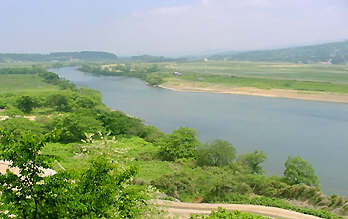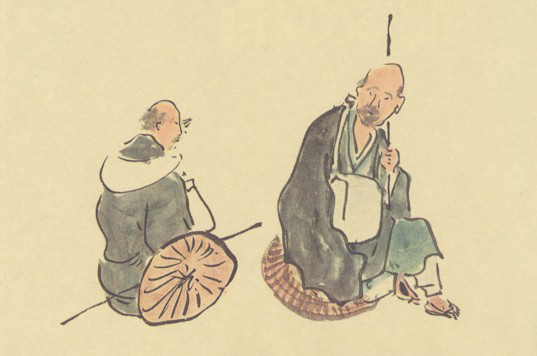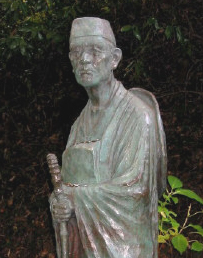|
Section : Hiraizumi - 平泉
("The three generations of glory ...")
|
|
| Background: After Minamoto no Yoritomo defeated the Taira in the Gempei Wars, recounted so beautifully in the Tales of the Heike (Heike monogatari), his brother Yoshitsune, who was his rival in warfare, fled in 1186 to his old homebase of Hiraizumi, where the Oshu Fujiwara clan had raised him. Government edicts demanding his capture became serious threats when his patron Fujiwara no Hidehira died in 1187. Yoshitsune's army was assaulted and overwhelmed at his Koromo River castle and Yoshitsune was forced to commit suicide. His final hours are tragically told in the last pages of the Gikeiki, translated by Susan Matisoff as Yoshitsune. Go here to read those several paragraphs. |
|
|
|
 |
|
 |
|
| Buson's Illustrated Scroll of Narrow Road to the Interior (奥の細道画巻). This portion housed in Itsuo Art Museum, Ikeda City. Click on image to enlarge. |
View from the hilltop with Yoshitsune's grave. |
|
|
|
|
 |
|
The three generations of glory of the Fujiwara of Hiraizumi vanished in the space of a dream. The ruins of their Great Gate are two miles this side of the castle. Where once Hidehira's mansion stood there are now fields, and only Golden Cockerel Mountain, the artificial hill constructed at his command, retains its old appearance.
...
It was at Palace-on-the-Heights that Yoshitsune and his picked retainers fortified themselves, but his glory turned in a moment into this wilderness of grass. "Countries may fall, but their rivers and mountains remain; when spring comes to the ruined castle, the grass is green again." These lines went through my head as I sat on the ground, my bamboo hat spread under me. There I sat weeping, unaware of the passage of time.
夏草や
兵どもが
夢の跡
natsugusa ya
tsuwamono domo ga
yume no ato
The summer grasses--
Of brave soldiers' dreams
the aftermath.
unohana ni
Kanefusa miyuru
shiraga kana
In the verbena
I seem to see Kanefusa --
Behold his white hair!
(from The Narrow Road to Oku,
Donald Keene, translator)
|
|
| Statue of Basho at Hiraizumi. Click on image to enlarge. |
|
| Click here to go to a Japanese web site that super-imposes in animation this poem on a partially hidden warrior helmut set into summer grass. The decorative protrusions that rise up from the helmut and the blades of grass do suggest one another. |
|
|
 |
|
|
|
|
|
|
|
|
|
|
|
|


